My Sorsogon 2: Warm company, flavors of home
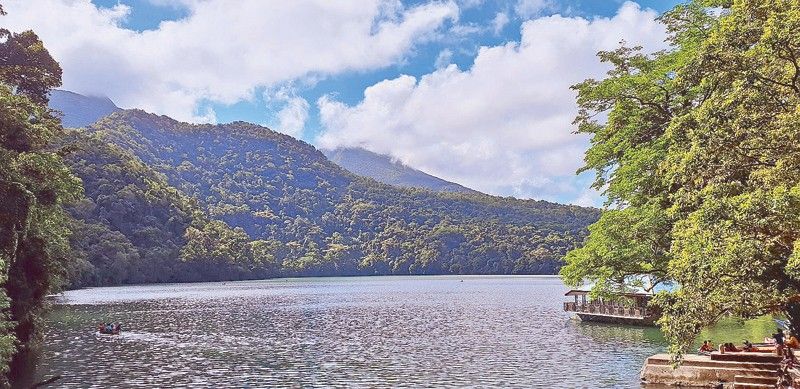
MANILA, Philippines — One of the joys of homecomings is to be in the warm company of relatives and friends. I was happy to see childhood and high school friends, former teachers and two of my godmothers who at 84 candidly shared the secrets of their longevity.
Ninang Cora sticks to a low salt, low fat diet. But she acceded to my request to make me a childhood favorite, burong tabudios, a scaly variety of fish salted to precision. We ate it with gusto for breakfast along with garlic rice and slices of tomatoes.
Ninang Celia, on the other hand, swears by a nightly snack of nuts and finger food with two bottles of beer. She graciously hosted us for dinner at the family-owned Fernando’s Hotel. At this time of the year, the 36-room hotel is booked with tourists exploring Sorsogon.
It was Maundy Thursday the following day and we had to prepare for the pamahaw sa disipulos or breakfast for the disciples.
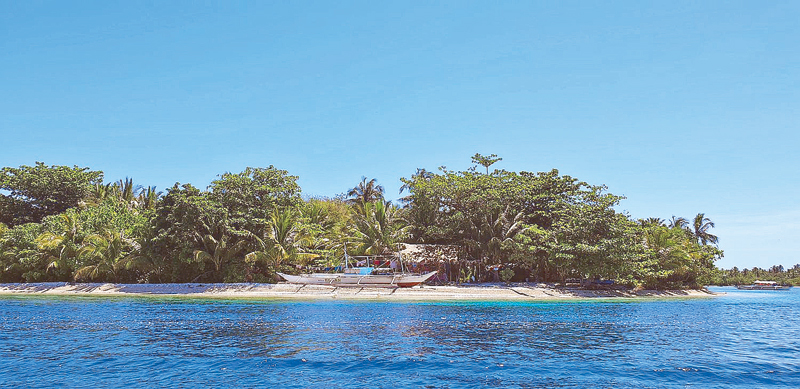
One of the islets on the way to Subic Beach.
For children on vacation, it was a challenge to wake up at six in the morning. But my nephew was determined to do so. He wanted to meet one of the disciples, “Peter.” And he didn’t only meet “Peter,” he was also introduced to “Judas,” who he found to be friendly, and to the ten other disciples.
My mother had been practicing the tradition of hosting breakfast for disciples on Maundy Thursdays before they carry on with their task to collect alms. Being the artist of the family and an ex-seminarian, my brother took the de facto role of preparing the altar and prayer nook. My sister and I revived our duty to fix the buffet composed of native delicacies: two varieties of suman, ibos, dinuguan with lanson (Sorsogon’s version of puto), cassava cake, biko, linusak (nilupak in Tagalog), pansit palabok and a family favorite called binut-ong – sticky rice soaked in coconut milk, wrapped in young banana leaf and steamed. It is usually eaten with drizzles of brown sugar and ripe mango on the side. We realized it was a menu loaded with carbohydrates, but I still cooked nasi goreng just to add some twist to the spread.
Seafood is abundant in Sorsogon. We had regular servings of blue crabs and shrimps halabos, adobong pusit, broiled fish and a piece de resistance called balukò, a seashell from the scallops family, either cooked in coconut milk with chili bits or deep fried. These meals were matched with cocido, our own sort of sinigang, lato or seaweeds, vegetables in coconut milk such as laing or Bicol express. On those sizzling days our thirst quencher was freshly picked buko. It was splendid to relish the memorable flavors of home!
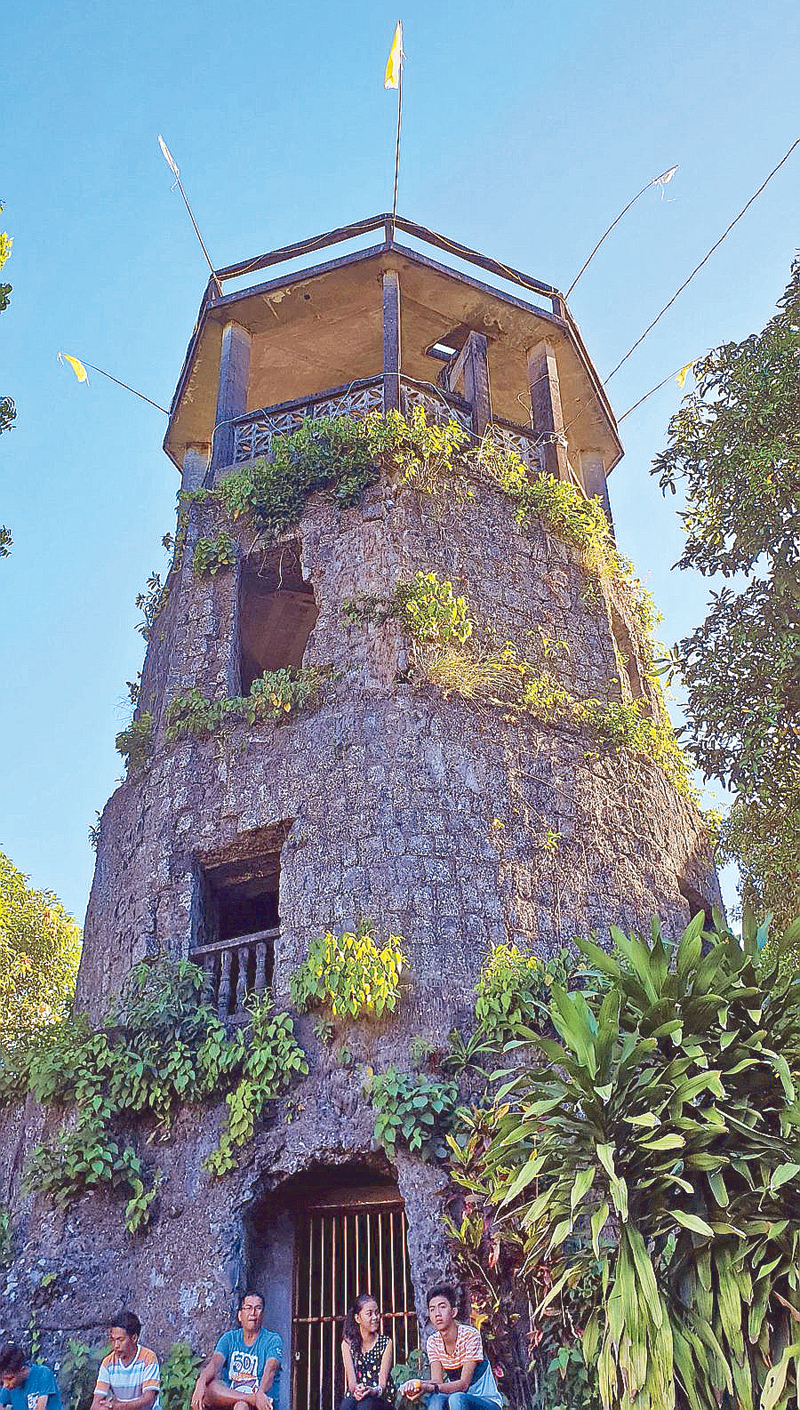
The belfry of St. James the Greater church once served as watch tower.
We went to the town of Gubat to revisit Rizal Beach. Growing up, Rizal was our go-to beach for special occasions, while Tolonggapo in Bacon was for our weekend or spur of the moment picnics. The Rizal beach of old was a vast stretch of fine brownish-black sand with few open cottages. Now there are more cottages and pockets of resorts for overnight accommodations.
Unlike the beaches in Bacon, Rizal has a wider coast with giant waves of the Pacific Ocean, making it an ideal place for surfers. Surfing has become quite popular in this part of Sorsogon that there are places now like the Surf Camp and a hotel for surfers. We spotted some beginners being trained by Caucasian-looking surfers, while there are quite a number of children and teenagers learning to surf on their own. Keeping in mind that it was Holy Thursday, we simply sat on the shores and watched surfers polish their skills.
From Gubat, we proceeded to the town of Barcelona where St. Joseph Church, one of the oldest and most beautiful churches in our province, imposingly stands. Built in 1874 by the Franciscans, St. Joseph church is predominantly made of stone and limestone with stained-glass windows of the Holy Family, the Virgin Mary and other saints adorning parts of the structure. Although the church is currently being restored, the mysticism and charm of its picturesque façade remains captivating.
Across the church are the ruins of the Presidencia building. As narrated in the marker, the historical structure was the seat of government during the Spanish period. It also served as a fortress to prevent pirate attack. From this point, one gets a spectacular view of the Pacific Ocean while adjacent to the ruins is the seawall that doubles as a promenade.
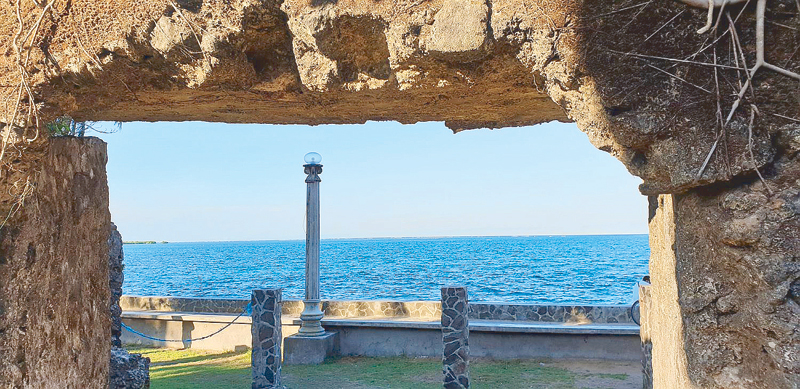
Look out onto the Pacific Ocean from the ruins of the Presidencia.
For the Good Friday Visita Iglesia, we visited St. Anthony de Padua Church in Juban, where some century-old Spanish bahay na bato still stand; St. Michael the Archangel church in Irosin, which is strikingly located on top of a hill, and St. James the Greater church in Bulusan with its stunning belfry facing the church. Each of these churches has its unique architecture and significance. For example, a marker from the National Historical Commission explains that the belfry of St. James was built as a watchtower to defend the townsfolk from invaders.
We passed by the placid Bulusan Lake, which has become a popular tourist destination. That time, the supposedly tranquil place was packed with people, parking and going inside the recreational area was a challenge.
We concluded the last few Stations of the Cross at the St. Clare Monastery in Barangay Cabid-an in Sorsogon City. The church is surrounded with verdant foliage and flowering plants, it is so serene one can hear the chirping of birds and perhaps, at very quiet moments, the fluttering of butterflies in the garden.
The St. Clare Monastery is a preferred place when I need to seek solace. It was in the same church where we attended the Easter vigil. We cherished the blessedness of the liturgy celebrated in our mother tongue. I was touched to hear my daughter and her cousins trying to sing songs in the dialect and responding by reading from the TV screen.
In Sorsogon, the highlight of Good Friday is the procession around the city proper. Those joining the procession must be barefoot. Ten years ago, my brother and I took part in this practice. This year, I felt I wasn’t spiritually prepared to join. I relegated myself to an onlooker and helped explain to the children the carosas or floats depicting the passion and death of Jesus.
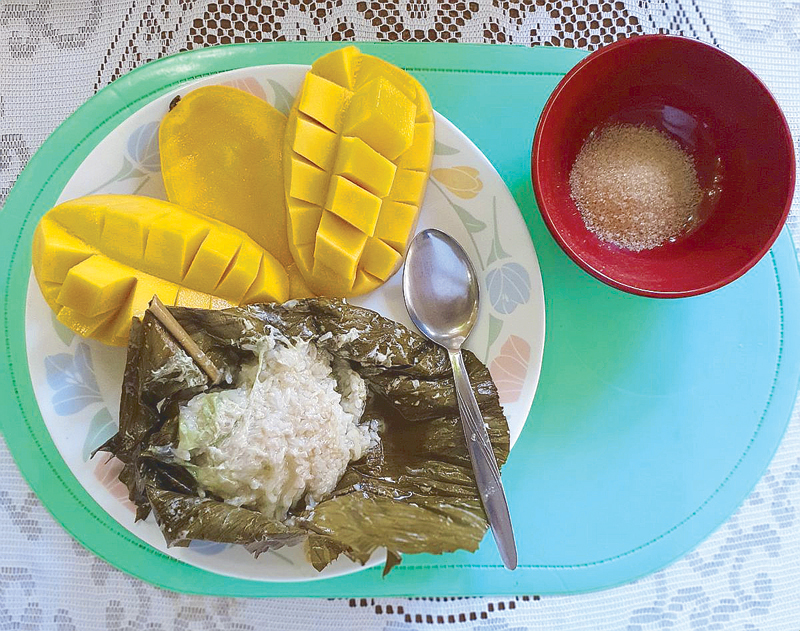
Binut-ong is best eaten with brown sugar and slices of lucious mango. Photos by Dondee Delgado
As a child, I remember counting the number of carosas while watching in awe the elegant and well-lighted floats. My favorites were the floats of Simon the Cyrenian helping Jesus carry the cross and the Mater Dolorosa. But my eyes always lit in fascination at the ultimate float, the Santo Entierro or image of the dead Christ with a throng of devotees following behind and taking turns to touch what is believed to be a miraculous rope attached to the carosa. The is followed by a band, playing a melancholic tune, the melody of which still makes me teary eyed.
On that particular Good Friday, I knew something was amiss in the whole ritual. The number of carosas has dwindled and a few were dim. Some of those who joined the procession were in walking shoes or slippers and while the music of the band was still the same, the mood was not as somber as before. And men no longer scampered for their turns to touch the rope attached to the Santo Entierro.
Times have indeed changed. But despite the many changes I have observed after three years of being away, I know in my heart that there are a thousand more reasons to always come back home: family and our parents being foremost of all.



















